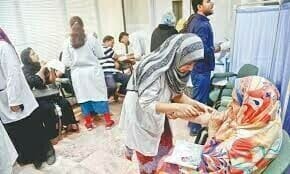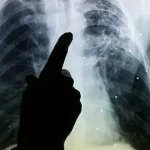LAHORE: According to a concerning World Health Organization (WHO) research, Pakistan has the highest rate of viral hepatitis C infections globally (8.8 million), and 44% of newly diagnosed cases of hepatitis C are linked to hazardous medicinal injections.
Egypt and Pakistan had previously reported the highest numbers of cases of hepatitis C and B, respectively.
The predicted number of deaths from viral hepatitis grew from 1.1 million in 2019 to 1.3 million in 2022, according on statistics from 187 countries. According to the report, hepatitis B caused 83 percent of these, and hepatitis C caused 17 percent.
With almost 12.6 million cases recorded in 2022, Pakistan only behind China, India, Indonesia, and Nigeria in the world’s hepatitis B and hepatitis C case counts when both diseases are combined.
According to WHO’s Global Hepatitis Report 2024, this nation is responsible for 44% of new infections caused by contaminated injections.
Ten nations, including Ethiopia, Bangladesh, Vietnam, the Philippines, and the Russian Federation, make up approximately two thirds of the world’s cases of viral hepatitis B and C, according to the WHO’s Global Hepatitis Report 2024.
Six nations account for half of the world’s hepatitis C cases: China, India, Indonesia, Pakistan, the Russian Federation, and the United States. On the other hand, according to the report, Egypt is now the first nation to reach gold tier status on the route to hepatitis C elimination. This achievement is predicated on Egypt meeting WHO standards, which will position Egypt to meet the reduced incidence and death targets of full elimination by 2030.
Furthermore, the report stated that as of December 2023, 16 nations had received validation for having eradicated one or more of HIV, syphilis, and HBV.
Senior medical specialists have commented on the news, stating that the majority of patients in Pakistan are either diagnosed inadvertently or develop symptoms years after contracting the infection.
With a national incidence of 4.8%, Pakistan has been carrying the second-highest burden of hepatitis C worldwide, according to Dr. Masood Sheikh of the Lahore General Hospital, who spoke with Dawn.
He stated, “There was an 8 percent increase in hepatitis B-related deaths and a 5 percent increase in hepatitis C-related deaths from 2015 to 2019.”
Due to improper healthcare procedures, sharing personal things, and misunderstanding of sterilizing techniques, the virus multiplied throughout Pakistan. He bemoaned the fact that during the previous 20 years, the number of liver cancer cases and liver transplants had increased threefold nationwide.
“Hepatitis is an inflammatory disease of the liver that can lead to various health complications and even death,” Dr. Sheikh stated.
Information on the availability of medical supplies for the treatment of viral hepatitis from 38 nations, which together account for about 80% of the world’s cases of viral hepatitis B and C, is also included in the most recent WHO report.
According to updated WHO predictions, 50 million people worldwide will have hepatitis C and 254 million people will have hepatitis B in 2022.
“In the 30-54 age group, half of the burden of chronic hepatitis B and C infections was diagnosed, with 12 percent occurring among children under the age of 18,” the research states. Fifty-eight percent of the instances involve men.
One bright spot can be found in medicine pricing data: the lowest recorded cost for a 12-week course of daclatasvir/sofosbuvir, a combination of two drugs used to treat hepatitis C, came from Pakistan and was approximately $33. China had the highest price ever recorded, at almost $10,000.








